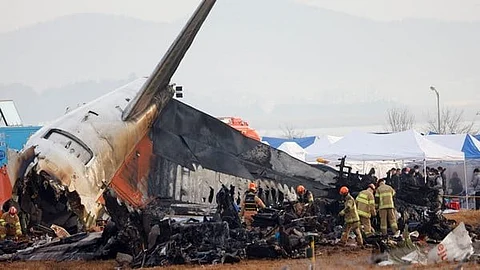How a plane's black box can reveal the mystery behind an airplane crash
It was in 2015, when an international passenger flight, Germanwings Flight 9525 — scheduled from Spain to Germany crashed, killed 150 people on board. What triggered the crash? The investigation, aided by its black box, concluded that the co-pilot, Andreas Lubitz, had suicidal tendencies and deliberately crashed the aircraft. This takes us to the question — how does a black box help aid investigation after an airplane crashes?
What is a black box?
A black box is a small rectangular box on an aircraft that records the details of each flight and is designed to endure fire, water pressure, explosions, and high-speed crashes. Contrary to the conventional wisdom, a black box is bright orange in colour. It is a pair of devices — Cockpit Voice Recorder (CVR) and Flight Data Recorder (FDR).
How does a black box aid a plane crash investigation?
While CVR records all cockpit audio; from warning alarms and mechanical sounds to pilot conversations and radio transmissions, the FDR keeps a record of critical system parameters such as speed, engine thrust, altitude, and flight path data. These recorders are capable of storing over 25 hours of information, including data from previous flights in that timespan — helping trace mechanical failures that loom over time.
When a plane crashes and survivors can’t speak, flight recorders step in as silent witnesses, revealing every cockpit sound and system response with precision and offering investigators an objective truth, just like DNA does in criminal investigations.
Once this is recovered after an accident, it is sent to forensic laboratories, where memory modules are extracted and decoded, voice and flight data are synchronised, and findings are correlated with radar and air traffic control logs. This analysis might last from days to weeks, while preliminary assessments are provided within 24 hours of recovery in order to direct the investigations.
What does the past say?
In 2009, Air France Flight 447, bound for Paris from Rio, crashed into the Atlantic Ocean, killing all 228 people on board. The blackbox of the airplane was discovered only two years later – at a depth of 13,000 feet and its further analysis revealed that the crash was triggered by faulty sensors caused by ice on the plane’s sensors, and pilot errors.
In 2014, the Indonesia AirAsia Flight QZ8501 – an Airbus A320, nosedived into the Java Sea, killing 162 people on board. The recovery of blackbox uncovered that a malfunction in the rudder control system and pilot errors had catapulted the crash.
In the Air India plane crash of June 12, 2025 that killed around 300 people, though one of the two black boxes has been recovered, the experts from DGCA and Aircraft Accident Investigation Bureau are yet to unravel the mystery behind the crash. Though the initial apprehensions hint at take-off anomalies and system failures, the actual cause is yet to be known. Was it a mechanical issue, a bird strike, an onboard fire, engine failure or human error? Time will tell.



